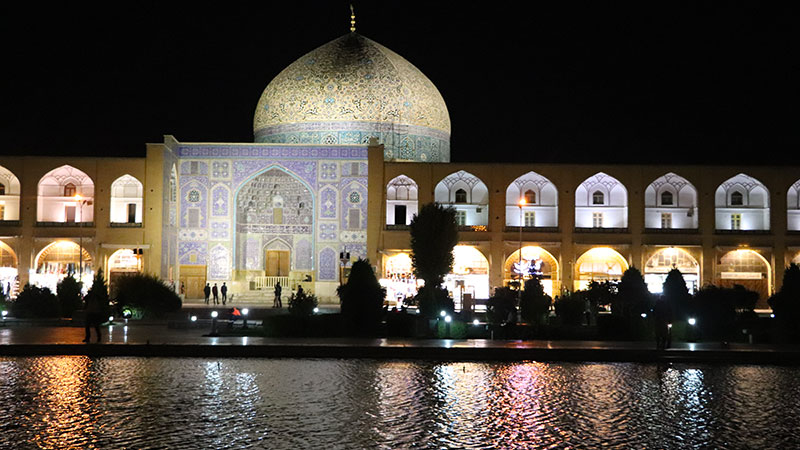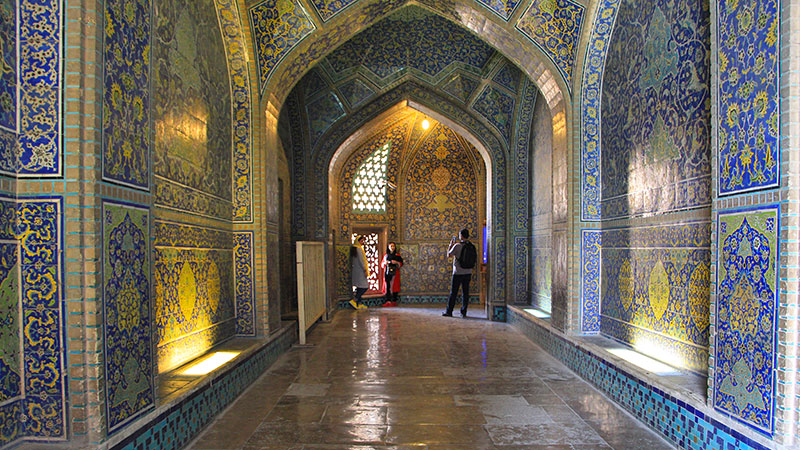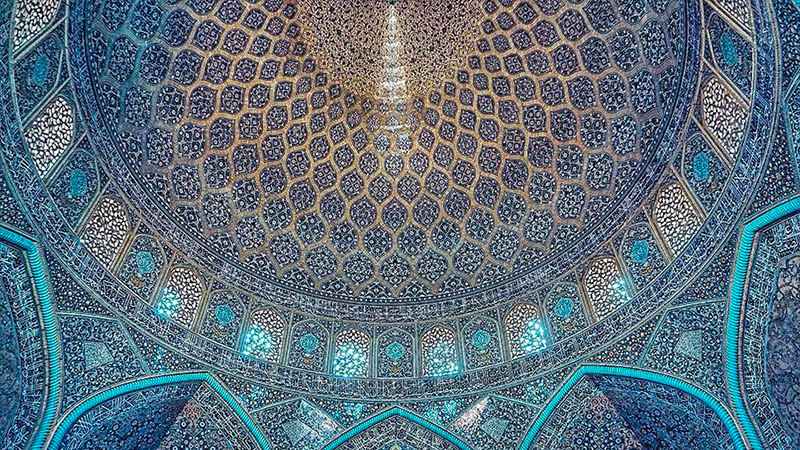 Signin with Google
Signin with Google Signin with Facebook
Signin with Facebook Places
PlacesSheikh Lotfollah Mosque, the Epic of Light and Tiles

The eastern gem of Naqsh-e Jahan
It was at the beginning of the 17th century in the time of the Safavid dynasty when Shah Abbas the great, ordered building a mosque in the Iranian capital, Esfahan. He wanted to honour his father-in-law, Sheikh Lotfollah, the reserved Shiite leader.
Mohammad Reza Esfahani, the prominent architect of the time, took the responsibility of building the mosque. Although Shah mosque was on the southern side of Naqsh-e Jahan Square, this small mosque was supposed to be a private praying place for the Safavid royal family. So, on the eastern side of the square just across the Ali Qapu Palace, a magnificent architectural masterpiece erected in sixteen years!

Not a Human-made Construction!
Why did Arthur Upham Pope believe this mosque cannot be human-made? Pope was an American expert and ardent of Persian art and architecture, he stated so as he was amazed by all the flawless details of Sheikh Lotfollah mosque. Although the design of the mosque is simple and modest, the decoration of the inner and outer of it is very intricate.
At the moment you enter the praying hall, you feel to be swept away in a world upwards. The dome drags your eye toward the centre to the point the rings of the ornamental lineups with arabesque designs become smaller. The azure blue tiles adorned with yellow and turquoise intertwining floral patterns calm down your soul and give a clear sense of spirituality and tranquillity.

The compound tiles design the walls with arabesque patterns, verses of the Holy Quran, and Persian poems add more glory to the main hall. This architectural masterpiece of Iran stuns spectators for the past 400 years by the iconic inscriptions of Ali Reza Abbasi, the great master of Persian calligraphy and painter.
The turquoise ceramic spirals are rooted in carved marble vases frame the eight corners and lead your eyes up to pure magnificence. As you raise your head, you will see the patterned dome. The exceedingly attractive oval-shaped patterns on the dome get smaller and smaller from the drum toward the apex. Through this design, the artist gave the illusion of more height to the 13-meter-high dome.
The masterpiece of Persian architecture
To reach this private mosque from the Ali Qapu Palace, the king and his wives should pass across the Naqsh-e Jahan Square. Being seen in public several times a day was not an acceptable thing for the king. So, to keep the royal family safe, an underground tunnel connected the mosque to the palace.
It is not the only strategy of the talented architect. The direction of Qibla, the fixed direction of Kaaba where Muslims are facing for performing daily prayers, is to the south-west. The Naqsh-e Jahan Square has a north-south axis, so there would be a problem to match the entrance of the mosque with the Qibla. To not destroy the fine rectangular shape of Naqsh-e Jahan, one of the largest squares in the world, the architects used an L-shaped corridor. This 45-degree turning from the mosque's entrance to the dome hall beautifully solved this problem.

The best example of the Iranian Islamic genius
Minarets are the main elements of mosques for announcing the praying times and calling prayers to mosques. To not catch any attention to this private mosque, Sheikh Lotfollah Mosque has no minarets.
Due to the space limitation, there are also no courtyards and interior iwans. So, after getting in and passing through the corridor, the main praying hall is in front of you. At the centre of the dome, a beautiful peacock is painted but without a tail. The gifted architect had another unique plan to complete the scene. The sun rays passing through the lattice windows on the walls make the bird's tail. This remarkable feature of a peacock with a tail of light is the most different peacock of the world showing its rare beauty at certain times of the day.
Visiting the Sheikh Lotfollah Mosque, Robert Byron called it the best example of the Iranian Islamic genius. Only the mihrab of this mosque is good proof of Byron's saying.
The mihrab is a unique structure ornamented with intricate mosaics, delicate plaster muqarnas, and fine floral and arabesque designs. Exactly opposite of the entrance, the vaulted mihrab shows the Qibla direction.

The Incredible Play of Light & Colour
The façade details of Sheikh Lotfollah Mosque are no less exquisite than the interior designs. The simple marble belt around the structure accompanied by wonderful seven coloured tiles are in complete harmony with the three other monuments in the Naqsh-e Jahan Square.
The most completely round dome of the world has a unique exterior design. On a light base, the attractive azure and deep blue floral patterns look much more attractive—the white Quranic inscriptions on dark blue background in Kufic writing complete the grandeur of this rare beauty. The sunlight magnifies the splendour of the Sheikh Lotfollah dome by giving it a cream hue during the day and a stunning pinkish shade at sunset.
You can stay for hours in this place and enjoy all the splendid details and eye-catching patterns and colours of the Sheikh Lotfollah Mosque.
By Samaneh Zohrabi / TasteIran


